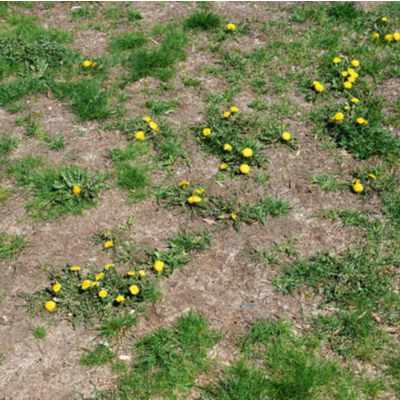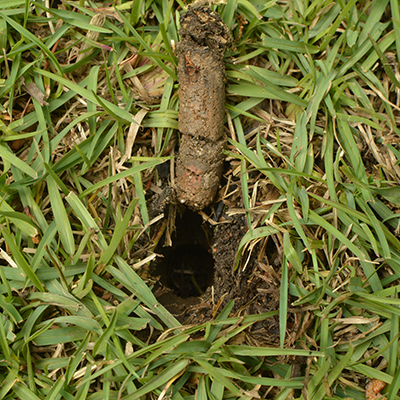A few months of outdoor activities, foot traffic, and climate stressors are bound to take a toll on any lawn, including compacting the soil. This condition is one of the most common causes of concern amongst residential and business property owners in the South Bend, Indiana area. So how do you know when you have compacted soil? Here is everything you need to know about compacted soil, the process of aeration, and complimenting it with overseeding.
What is Compacted Soil?
Compacted soil occurs when the particles of dirt are squeezed together tightly, reducing the pore space between them. It’s often caused by a build-up of thatch, or grass clippings, and other matter that forms a barrier at the base of your turf. It stops the essential nutrients, oxygen, water, and sunlight from reaching your grassroots. When this happens, your grass becomes malnourished and dehydrated. It will weaken, become more susceptible to disease and insect infestations, and could eventually die. Compact soil can occur on any type of lawn, including athletic fields.
How Can You Tell If Your South Bend Area Turf is Compacted?
Does your grass look dehydrated, have brown spots, or feel spongy? Chances are, you have compacted soil. Other sure signs to look for include:
- Bare, thin, patchy areas of grass
- Stunted growth of plants
- Bare dirt where nothing, including weeds, will grow
- Water runs off or pools in areas of your yard
- Your grass is spongy when you walk on it
If you’re still unsure, you can try what is known as the “screwdriver test in the lawn care world.” Simply take a screwdriver and place it into the ground. If it’s dry and does not easily penetrate the earth, your soil is probably compacted. You can also call in a professional such as Hydroseed Inc. Our turf care experts can assess and determine if compact soil is for sure the cause of your lawn’s demise.
So What Can You Do?
Aeration for the Revitalization of Your South Bend, Indiana Turf
The best way to treat compacted soil is through a process called aeration. Aeration uses either a machine to punch small holes in your yard or a liquid application. Both allow the water, nutrients, and oxygen to once again be distributed down to your roots. Doing this helps to breathe new life back into your lawn. These are just a few of the many benefits having your turf aerated provides. Other advantages of aeration include:
- Promotes stronger, healthier roots
- Improves fertilizer intake
- It helps to eliminate water runoff and puddling
- It breaks down the thatch build-up
- Improves your grass’s resistance to drought, and other climate stressors
- An overall, more green, lush lawn
When is the Best Time to Perform Aeration?
There is no written rule on when to perform aeration as long as it is performed during the growing season. Cool-season grasses such as those we have here in Indiana are best aerated in the fall. This is because aerating in the spring can get tricky with the different types of weeds present.
Overseeding for the Ultimate Protection and Health of Your Lawn
We recommend overseeding your grass directly following aeration. Why might you ask? Because when a lawn is freshly aerated, the same tiny holes that allow water, air, and nutrients to circulate also provide great openings for grass seed. So what exactly is overseeding? Overseeding introduces newer species and varieties of grasses to your lawn. This will help fill in any bare areas, create thicker grass, prevent weeds, fend off pests, drought and disease and enhance the overall color and appearance. Having aeration and overseeding performed can give your turf the boost it needs, dramatically increasing its health and improving its overall appearance.
If Your Lawn Needs Aeration or Overseeding, Contact the Professionals at Hydroseed Incorporated
At Hydroseed Incorporated, we provide a variety of lawn care services, including lawn installation, lawn maintenance, and aeration and overseeding. Our aeration and overseeding services will rejuvenate your lawn and give you the strength and vibrancy needed for healthy turf. Learn more by calling us at 800-468-LAWN or contact us here. Want to get to know us better? Watch us in action on YouTube and follow us on Facebook.

